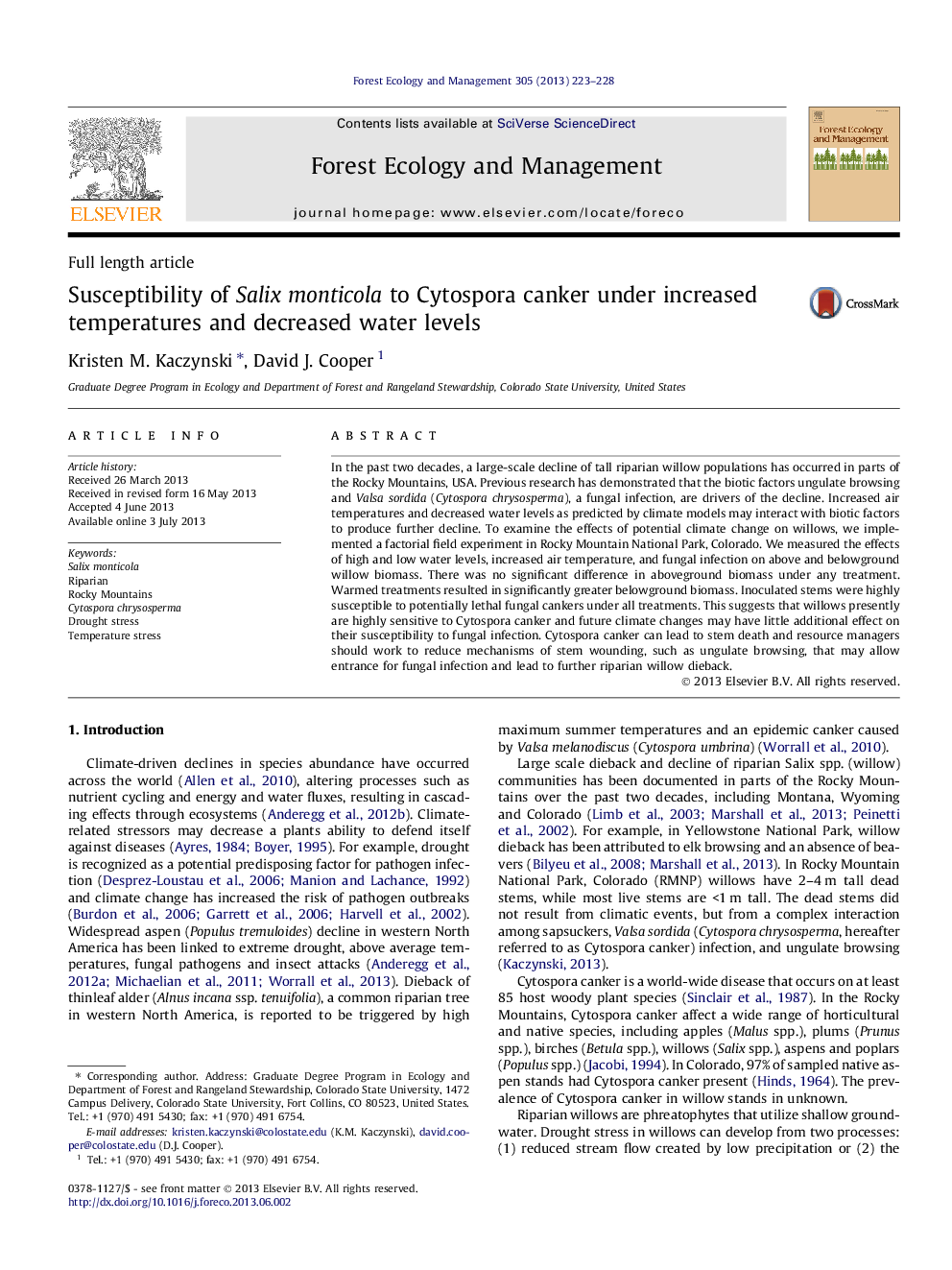| Article ID | Journal | Published Year | Pages | File Type |
|---|---|---|---|---|
| 86823 | Forest Ecology and Management | 2013 | 6 Pages |
•Large scale decline of riparian willows has occurred in parts of the Rocky Mountains.•Climate drivers may interact with fungal infection and lead to further decline.•Increased air temperature and lower water levels did not affect susceptibility.•Potential climate change may have little effect on susceptibility to Cytospora.
In the past two decades, a large-scale decline of tall riparian willow populations has occurred in parts of the Rocky Mountains, USA. Previous research has demonstrated that the biotic factors ungulate browsing and Valsa sordida (Cytospora chrysosperma), a fungal infection, are drivers of the decline. Increased air temperatures and decreased water levels as predicted by climate models may interact with biotic factors to produce further decline. To examine the effects of potential climate change on willows, we implemented a factorial field experiment in Rocky Mountain National Park, Colorado. We measured the effects of high and low water levels, increased air temperature, and fungal infection on above and belowground willow biomass. There was no significant difference in aboveground biomass under any treatment. Warmed treatments resulted in significantly greater belowground biomass. Inoculated stems were highly susceptible to potentially lethal fungal cankers under all treatments. This suggests that willows presently are highly sensitive to Cytospora canker and future climate changes may have little additional effect on their susceptibility to fungal infection. Cytospora canker can lead to stem death and resource managers should work to reduce mechanisms of stem wounding, such as ungulate browsing, that may allow entrance for fungal infection and lead to further riparian willow dieback.
